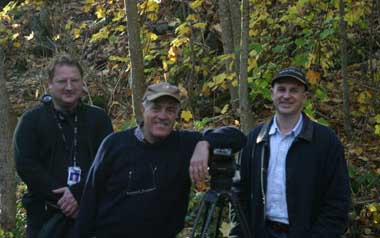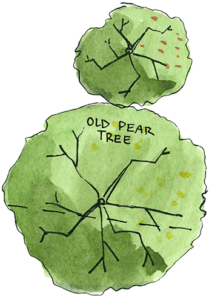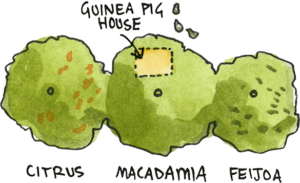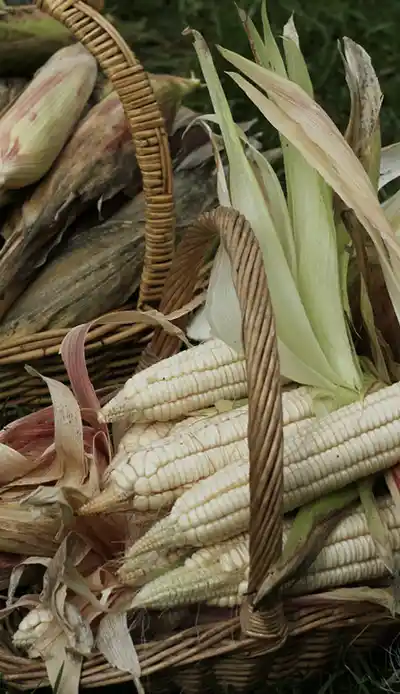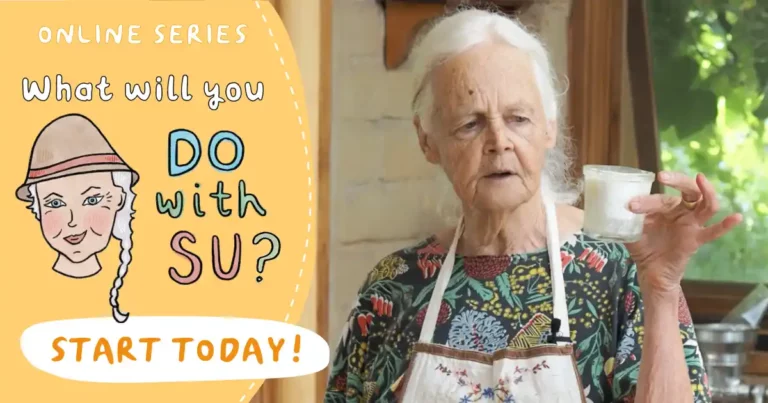Spring Creek
Spring Creek Community Forest is located on the north side of the township of Hepburn, central Victoria, and is part of the Hepburn Regional Park. The forest is a mixture of native and naturalised vegetation with a predominance of willows forming a riparian canopy along the creek and its tributary gullies.
The area has been largely managed by an informal network of locals for more than twenty years without involvement or funding by the Catchment or Parks authorities. Most of the work has been track construction and further tree planting to increase diversity and further shade out blackberries. Increased recreation, reduced fire hazard, guided tours and scientific research have been some of the outcomes.
In many similar areas within the North Central Catchments, and right across S.E. Australia, publicly funded willow removal program’s have destroyed the amenity and ecological values that can still be found at Spring Creek.

July 2010
Blackberry management interview and action with David Holmgren
David Holmgren explaining a low cost technique for revegetating eroded gullies without heavy machinery or chemicals. The technique turns thick, fire-prone blackberry cover into useful fire-resistant trees on what was a landscape completed denuded in the gold era. Working bee action in the background. Thanks to Dan Palmer of Very Edible Gardens (VEG) for this video.
June 2008
Willow management update
In late 2007 the North Central Catchment Management Authority responsible for willow removal programmes in central Victoria, began a community consultation process as part of a new willow management (ie removal) plan. After some discussion it was agreed that David Holmgren would present “alternative management perspectives” to two community forums held in Kyneton and Daylesford. Download David’s presentation.
At the Daylesford meeting a large turnout included many people angry at the continuing poisoning of willows in the area while the community consultation process was proceeding.
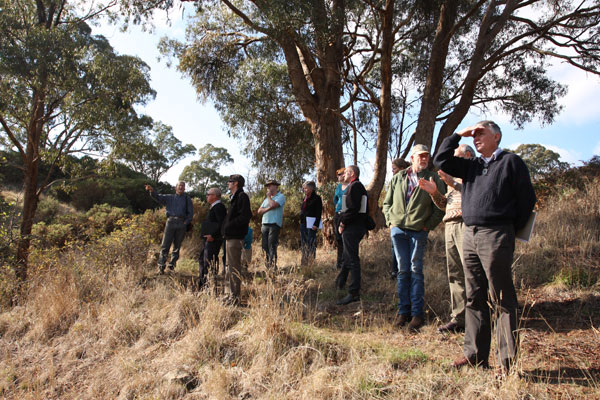
As a follow on from David’s presentation, in May 2008, further discussions led to a guided tour of Spring Creek Community Forest by David Holmgren for staff and board members of the NCCMA as well as the new environment and planning officers from Hepburn Shire Council.
At the same time the draft Willow plan of the NCCMA was circulated for public comment. It includes a moratorium on willow removal in the Daylesford area, until there is greater public acceptance, and some indications of possible research into contentious issues of willow ecology. The draft plan appears to preclude willow utilisation as a management option.
See David’s submission to the draft plan.
David’s “Willow Management for Agricultural Landscapes” discussion paper compares a range of management alternatives from traditional grazing to accelerated succession such as is being done in the Spring Creek community forest.
The main focus of the discussion paper is on pollarding for fodder management because David believes this system can achieve most of the reasonable objectives of three competing paradigms in agricultural streamside management.
- Traditionalist: typified by graziers focused on utilisation of streamsides as part of the farming system.
- Nativist: typiifed by university trained staff of Catchment management authorities focused on increasing indigenous riparian vegetation.
- Permaculturist; typified by smaller land managers seeing multiple values from new mixed exotic/native ecosystems.
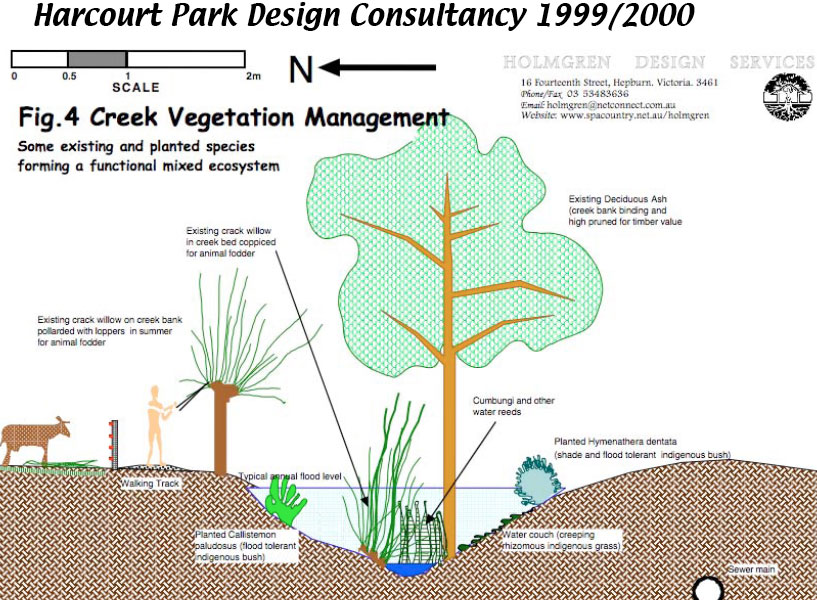
One exciting new use of willow in our region is by wood worker Jason Jones who has been making woven garden screens from salvaged willow and elm. This opportunity to gain some value from the destruction caused by CMA programmes is to be applauded even if the authorities feel uncomfortable about any recognition of value from exotic trees. David’s proposals for pollarding of willows for fodder would involve an integrated harvesting of existing mature willow trunks suitable for use by woodworkers. Elm suckers can also be managed for fodder but the very high value of elm as a furniture timber and its threatened status in Europe suggest management and retention of sucker regrowth groves of elm in our region should be thinned rather than pollarded as the best combination of heritage, ecological and timber values.
It is not widely understood that the International Convention on Biodiversity requires countries such as Australia to conserve introduced species that are threatened or vulnerable in their indigenous territory (eg Elms and Camels).
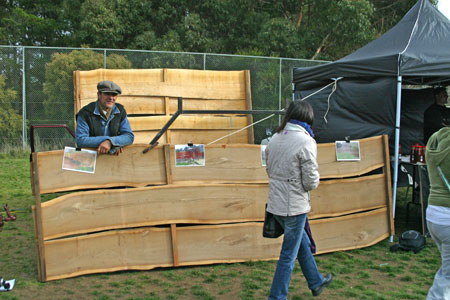
On another front
Research over many years by Michael Wilson and colleagues continues to build the scientific evidence to refute the Nativist ideology behind willow removal programs. For example the research showing native Blackfish prefer willow root mat overhang structures to other forms of habitat as daytime refuges in Birches and Creswick Creeks. See abstract of paper to conference of Society For Fish Biology.
Large scale removal of willows in these streams by the NCCMA has been partly justified as improving habitat for Blackfish.
For a more general overview by Michael Wilson of the ecological role of willows, see Willows: Weeds of Retention, a paper prepared as part of the increasing scientific research around Natural Sequence Farming developed by Peter Andrews, that involves extensive use of willows.
June 2006
Willow Wars – Spring Creek Community Forest on Landline
Fresh from his major expose’ on the sell-off of the Snowy Hydro, ABC reporter Tim Lee did an investigative piece on willow removal in rural Australia called Willow Wars. The program featured willow removal and stream “re-habilitation” at Gellibrand near Colac including interviews with staff of the Catchment Management Authority responsible for the work.
On 26th May 2006, Tim Lee interviewed David Holmgren at Picnic Flat, Spring Creek, speaking about the environmental benefits of wild willows. Also interviewed is the National Willow Co-ordinator, as well as volunteers and National Park rangers involved in Pussy willow removal from the Baw Baw National Park.
Broadcast Date: Noon Sunday 25th June, repeated 11am Monday 26th June 2006. For transcript after broadcast go to Landline website
Upper Spring Creek Restoration Project Management Report
In 2001 this report was prepared for the Daylesford Landcare Group. Without funding support the proposals were not acted upon, but they illustrate some of the same issues and options being addressed more informally in the Spring Ck Community Forest. Download Report (3MB)
Oct 2005
Spring Creek Community Forest under attack!
With local community activity at a low ebb over recent years and a more proactive approach by catchment management bureaucrats, government funds are driving large scale willow destruction along public waterways in the area. This has followed years of propaganda to get local Landcare groups to at least indicate support.
On October 17th the destruction of the lower, more wild section of Spring Creek Community Forest below the Breakneck Gorge causeway began. In a few days, 50 year old wild forest was destroyed using a chainsaw, a bulldozer, an excavator and herbicide. There was no community consultation process. No planning permit was required to destroy the vegetation on a few kilometres of creek bank in the season of highest risk of flood. Total project cost including revegetation will be $476, 000.
It appears there is every intention to move into the heart of the managed section of the Forest between the Breakneck Gorge causeway and the Spa Health Complex in the heart of Hepburn Springs.
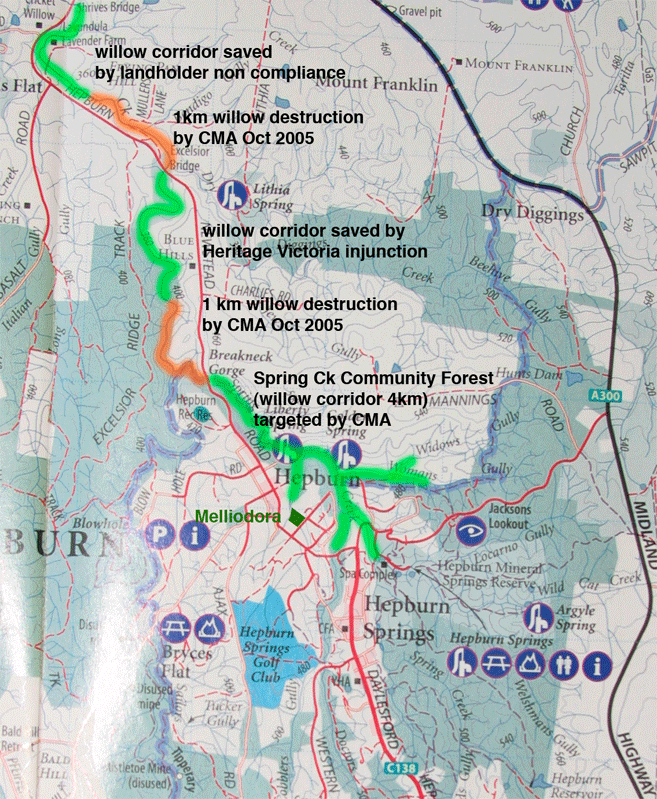
2005 during bird nesting season. Cost to the taxpayer? More than $30,000 per kilometre. Photo gallery of CMA willow destruction
Download extended press release from David Holmgren challenging those responsible to a public debate.
Download one page information sheet about the issue.
Email the North Central Catchment Management Authority to voice your views.
Email Geoff Howard, local member for Ballarat East, to voice your views.
An injunction by Heritage Victoria has stopped (at least temporarily) the destruction because of the heritage listing of stone walls along the creek from the gold mining era.
The wind where the willows were

- On going management of blackberry
- New proposals for willow removal at the upstream end of the lake.
Sept 1996
Submission to Environment & Natural Resources Committee of Parliament of Victoria
This submission to an inquiry into pest plants in Victoria, deals with both broad issue of public policy and sensible approaches to willow management along streams.
The submission is in two parts. The first, deals the with general policy issues concerning pest plant laws and in particular proposal to add large numbers of environmental weeds to the lists of plants proscribed by the Noxious Weeds legislation.
The second part, a case study of willows was used to illustrate the issues involved in more economically and ecologically rational management of so called environmental weeds. It drew heavily on the early stages of Michael Wilson’s (Centre for Environmental Management, University of Ballarat) PhD research on willows which was later presented at the Second Australian Stream Management Conference in February 1999 (Michael Wilson: “Post gold rush Stream regeneration: implications for managing exotic and native vegetation” )
The outcome of the inquiry seemed predestined to continue the push to spend more public money on plant destruction especially when the minister Marie Teahan launched the new “War On Weeds” before the committee had completed its inquiry or reported to the parliament.
Since then willow removal program have increased and now threaten the very sites which have provided the science and experience of positive results from willow naturalisation.
Download submission about management of naturalised vegetation and willows.

